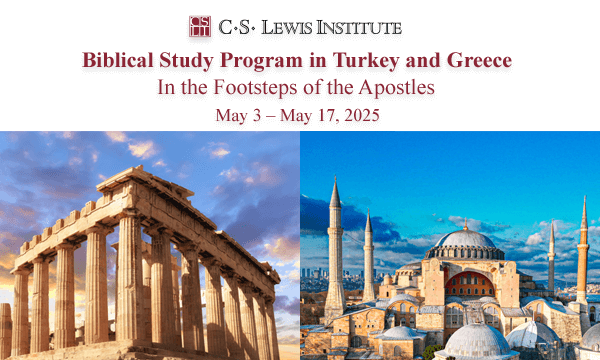Back to series



J.R.R. Tolkien (1892-1973)
J.R.R. Tolkien was born in Bloemfontein, South Africa, on January 3, 1892 (died in Oxford, England, September 2, 1973). His father, Arthur, a bank clerk, was transferred from England to South Africa and later became a manager with the Bank of Africa. Arthur’s bride, Mabel (Suffield), moved from England to South Africa where the two were married. About a year later, she gave birth to John Ronald Reuel, whom they called Ronald.
Ronald’s memories of his four childhood years in Africa were few; however, one memory stood out. When Ronald was learning to walk, he stumbled onto a tarantula. It bit him, and he ran crying to a nurse nearby who sucked out the poison. Even though he remembered only running through long grass in fear, large spiders with poisonous bites are mentioned more than once in his stories.
In April 1895, Mabel and her two sons (Hilary was born February 17, 1894) returned to England for a visit. Arthur planned to join them later. The delay increased when Arthur contracted rheumatic fever and struggled to regain his health. Mabel was planning on returning to be with him when news came that Arthur had suffered a severe hemorrhage and died on February 15, 1896.
Mabel rented a cottage in the countryside near Birmingham and began to educate her children at home. She knew Latin, French, and German, and could paint, draw, and play the piano. Ronald could read by age four, and his favorite subject was the study of languages. Early on, Mabel introduced him to the basics of Latin and French. Ronald loved the sounds of words, listening, reading, and reciting them.
In 1900, Mabel and her sister, May, decided to join the Roman Catholic Church, much to the displeasure of their family. Mabel raised both sons in the Catholic faith, and they remained devoted Catholics throughout their lives. Father Francis Morgan, a local priest, regularly visited the family and remained a lifelong friend.
In the same year, Ronald began studying at King Edward’s School. During his time there, he mastered Latin and Greek and became proficient in other languages, modern and ancient, such as Finnish and Gothic.
Early in 1904, Mabel became ill and was diagnosed as having diabetes. Insulin treatment was not available at that time, and she died later that year. Father Francis took the responsibility for watching over the boys’ welfare. They were sent to live with an aunt, Beatrice, and later with a Mrs. Faulkner.
Also staying at Mrs. Faulkner’s was a young woman, Edith Bratt. Ronald was 16 and Edith 19. Their friendship grew into a romance, but, when Father Francis found out about the relationship some time later, he absolutely forbade it. He told Ronald not to see her or correspond with her for three years until he was 21. After some initial hesitation, Ronald obeyed his mentor to the letter. After the three years, Tolkien worked to re-establish the relationship, and, in 1916, he and Edith married.
While finishing his education at King Edward’s, Tolkien made friends who formed a club—the T.C.B.S. or, Tea Club, Barrovian Society—named after the place where these friends met to read and criticize each other’s literary works. They remained in close correspondence until 1916 when two of the four died in World War I.
In 1911, Ronald went to Exeter College, Oxford, where he studied Classics, Old English, Germanic languages, Welsh, and Finnish. Eventually, he focused more on English language.
 Tolkien enlisted in the army and after four months in the trenches contracted recurring bouts of “trench fever” that effectively limited his time of military service. After the war, he first worked on the Oxford English Dictionary and later was appointed a professor of English at the University of Leeds (1920). In 1925, he was appointed to a professorship at Oxford in Anglo Saxon and much later, in 1945, the Merton Professorship of English Language and Literature at Oxford. Tolkien’s life at Oxford was uneventful or, perhaps, very eventful, depending on how you look at it. He was a professor giving lectures, meeting with students, doing research, and writing until his retirement in 1959.
Tolkien enlisted in the army and after four months in the trenches contracted recurring bouts of “trench fever” that effectively limited his time of military service. After the war, he first worked on the Oxford English Dictionary and later was appointed a professor of English at the University of Leeds (1920). In 1925, he was appointed to a professorship at Oxford in Anglo Saxon and much later, in 1945, the Merton Professorship of English Language and Literature at Oxford. Tolkien’s life at Oxford was uneventful or, perhaps, very eventful, depending on how you look at it. He was a professor giving lectures, meeting with students, doing research, and writing until his retirement in 1959.
In the next issue of Knowing & Doing, I will look at Tolkien’s writings—particularly The Lord of the Rings. For the rest of this article, I want to give some brief snapshots of Tolkien’s character and relationships.
- One inspiration for Tolkien’s writing was his relationship with his wife, Edith. He told one of his sons about a special moment with his wife early in their marriage. In 1917, while on leave from his army officer’s post, they went for a walk in the woods. There she danced for him alone. He said, “I met the Luthien Tinuviel of my own personal romance with her dark hair, fair face, and starry eyes and beautiful voice.” In that “glade filled with hemlocks” there arose the myth of Beren and Luthien. On their gravestone, it reads: Edith Mary Tolkien, Luthien, 1889 1971. John Ronald Reuel Tolkien, Beren, 1892-1973. He wrote, “Forever (especially when alone) we still met in the woodland glade and went hand in hand many times to escape the shadow of imminent death before our last parting.” Somehow, the difficulties of their lives never touched “the memories of our youthful love.”
- Tolkien met C.S. Lewis at an Oxford faculty meeting, May 11, 1926. Lewis wrote in his diary about Tolkien that he was “a smooth, pale, fluent little chap … No harm in him: only needs a smack or so.” The relationship developed, and Tolkien invited Lewis to join the Coalbiters Club, which focused on reading Icelandic myths (1927). These and other regular meetings allowed Tolkien and Lewis (at this time an atheist) to talk about issues relating to faith. In 1929, Lewis embraced theism; but it was not till 1931 that he came to believe in Christ as the Son of God. One night, Lewis, Tolkien, and Hugo Dyson were having dinner at Magdalen College. Lewis had difficulty with the parallels in pagan mythology and the Gospels. Lewis maintained that “myths are lies.” Tolkien argued, “No, they are not.” Myths in Tolkien’s view, although they may contain error, also reflect part of God’s reality. They are splintered fragments of the true light. Only by becoming a “sub-creator,” inventing myths, can mankind return to the perfection before the Fall. After a long night, together they came to the conclusion that Christ was the true myth—the myth become fact—revealed in history. Soon afterwards, Lewis came to believe in Christ. Lewis wrote in a letter to Arthur Greeves with respect to his new faith, “My long talk with Dyson and Tolkien had a great deal to do with it.”
- Tolkien and Lewis preferred plain dress that normally consisted of tweed jackets, flannel trousers, nondescript ties, solid brown shoes, dull-colored hats, and short hair.
- C.S. Lewis and friends loved long walks through the English countryside. Tolkien only occasionally joined them. George Sayer, author of the C.S. Lewis biography Jack, tells of a time when he (Sayer) was with Tolkien, Lewis, Warren (Lewis’s brother), and Dr. Harvard. Lewis pulled Sayer aside and said about Tolkien: “He’s a great man but not our sort of walker. He doesn’t seem able to talk and walk at the same time. He dawdles and then stops completely when he has something interesting to say. Warnie [Warren] finds this particularly irritating.” Sayer stayed back with Tolkien and found these observations true. Sayer says, “He talked faster than anyone of his age that I have known, and in a curious fluttering way, or interpolated remarks that didn’t seem to have much connection with what we were talking about.”
- Tolkien had loved trees ever since he was a child. Once, he said, “ORCS” when he heard the sound of a chainsaw. He said, “That machine is one of the horrors of our age.” Sometimes he imagined an uprising of trees. “Think of the power of a forest on the march,” he said.
- Tolkien gave much time to preparing and giving lectures at Oxford, many more than required for a professor. Sayer mentions Lewis’s comments on Tolkien as a lecturer: “He is scholarly and he can be brilliant though perhaps rather recondite for most undergraduates. But unfortunately, you may not be able to hear what he says. He is a bad lecturer. All the same I advise you to go. If you do go, arrive early, sit near the front and pay particular attention to the extempore remarks and comments he often makes. These are usually the best things in the lecture … In fact one could call him an inspired speaker of footnotes.”
- One of Tolkien’s favorite meetings was his time with the “Inklings.” This informal group met on Tuesday mornings at the Eagle and Child pub and on Thursday nights in Lewis’s sitting room at Magdalen College. At night, tea was served, pipes lit, and inevitably Lewis would query, “Well, has nobody got anything to read us?” Then someone would read a poem, story, or chapter, followed by praise or criticism, often punctuated with laughter. There was no formal membership, but regular attendees were Lewis, Tolkien, Warren Lewis, Dr. Harvard, Owen Barfield, Hugo Dyson, and Charles Williams. For instance, Tolkien would read from sections of a work in progress—The Hobbit—and later he read chapters of The Lord of the Rings to the group. Tolkien says of Lewis’s impact on The Silmarillion that it was not so much a matter of the influence of his comments but the sheer encouragement of Lewis that kept him going through the long process of writing.
- When The Lord of the Rings was completed, Lewis wrote to “Tollers” (as Tolkien was called by the Inklings): “I have drained the rich cup and satisfied a long thirst;” it is “almost unequalled in the whole range of narrative art known to me. In two virtues it excels: sheer sub-creation … Also in gravitas.” Lewis had his criticisms—which were delivered to Tolkien, straining the friendship—but overall, Lewis says, “I congratulate you. All the long years you have spent on it are justified.”
- Once, when engaged on the laborious task of grading School Certificate exam papers, Tolkien came across an empty page and impulsively wrote on it, “In a hole in the ground there lived a hobbit.” He did not know what this meant, but names can often be the genesis of a story. He started to think, “What’s a hobbit like?” It was only the beginning.
- Lewis said of Tolkien’s study of words, “He had been inside language.” He was always studying and creating languages such as for The Lord of the Rings.
- Once, Walter Hooper visited Tolkien after Lewis’s death. Tolkien commented that Lewis “had not made enough time for me.” Hooper explained that Lewis felt that Tolkien had not made enough time for him. Both claimed to be busy, but Hooper comments, “You just don’t really believe your friends are going to die.”
- Lewis died November 22, 1963. A few days later, Tolkien wrote to his daughter, “So far I have felt the normal feelings of a man of my age—like an old tree that is losing all its leaves one by one: this feels like an axe blow near the roots.”
Next issue, we will examine Tolkien’s writings. Biographical information on Tolkien can be found in the following: Humphrey Carpenter, J.R.R. Tolkien: A Biography. Joseph Pearce (ed.), Tolkien: A Celebration. Humphrey Carpenter (ed.), The Letters of J.R.R. Tolkien.

Arthur W. Lindsley
Senior Fellow for Apologetics, CSLI Arthur W. Lindsley is the Vice President of Theological Initiatives at the Institute for Faith, Works, & Economics. He has served at the C.S. Lewis Institute since 1987 both as President until 1998 and currently as Senior Fellows for Apologetics. Formerly, he was director of Educational Ministries at the Ligonier Valley Study Center, and Staff Specialist with the Coalition for Christian Outreach. He is the author of C.S. Lewis's Case for Christ, True Truth, Love: The Ultimate Apologetic, and co-author with R.C. Sproul and John Gerstner of Classical Apologetics, and has written numerous articles on theology, apologetics, C.S. Lewis, and the lives and works of many other authors and teachers. Art earned his M.Div. from Pittsburgh Theological Seminary and a Ph.D. in Religious Studies from the University of Pittsburgh. COPYRIGHT: This publication is published by C.S. Lewis Institute; 8001 Braddock Road, Suite 301; Springfield, VA 22151. Portions of the publication may be reproduced for noncommercial, local church or ministry use without prior permission. Electronic copies of the PDF files may be duplicated and transmitted via e-mail for personal and church use. Articles may not be modified without prior written permission of the Institute. For questions, contact the Institute: 703.914.5602 or email us.
COPYRIGHT: This publication is published by C.S. Lewis Institute; 8001 Braddock Road, Suite 301; Springfield, VA 22151. Portions of the publication may be reproduced for noncommercial, local church or ministry use without prior permission. Electronic copies of the PDF files may be duplicated and transmitted via e-mail for personal and church use. Articles may not be modified without prior written permission of the Institute. For questions, contact the Institute: 703.914.5602 or email us.
-
Recent Podcasts
A Welcome Change in Apologetics
by Randy Newman on April 18, 2025Apologetics has for a long time, been motivated...Read More
-
Resisting God – Dr. John W. Taylor’s Story
by Jana Harmon, John Taylor on April 11, 2025
-
The Defiance of Grace in the Ministry of Christ
by Dane Ortlund, Aimee Riegert on April 4, 2025
-
Recent Publications
Who Is The Real Jesus?
by John R.W. Stott on April 1, 2025The 21st century has provoked many conversations and...Read More
-
Does the Modern World Face a Crisis of Meaning?
by Cameron McAllister on March 1, 2025
-
The Impact of Technology on the Christian Life
by Tony Reinke on February 14, 2025
0
All Booked
0.00
All Booked
0.00
All Booked
18008
GLOBAL EVENT: 2025 Turkey & Greece Study Program – In the Footsteps of the Apostles
https://www.cslewisinstitute.org/?event=global-event-2023-biblical-study-program-of-israel&event_date=2025-05-03®=1
https://www.paypal.com/cgi-bin/webscr
2025-05-03

Next coming event
Days
Hours
Minutes
Seconds
GLOBAL EVENT: 2025 Turkey & Greece Study Program – In the Footsteps of the Apostles
On May 3, 2025 at 3:00 pmat İstanbul, TürkiyeCategories
Speakers

Arthur W. Lindsley
Senior Fellow for Apologetics, CSLI
Team Members





